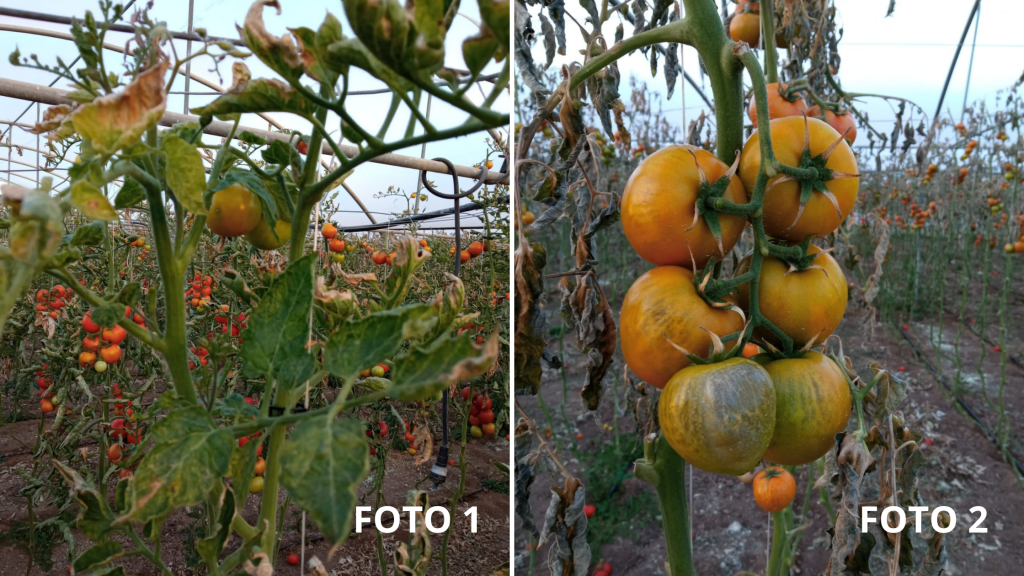Cold damage and consequences on crops

How to protect our crops from the cold with the help of biostimulants?
In recent weeks, our production area has been hit by sudden and continuous drops in temperatures that have caused considerable damage to greenhouse crops.
As is plausible, cold damage does not materialize immediately and instead becomes more and more important and visible with the passage of time.
The stress that the cold causes to the plants is conditioned by considerable intrinsic and extrinsic factors to the plants themselves, an example is above all the physiological state of the plant, the genetic characteristic of the cultivar, the phenological phase of the plant itself. (PHOTO 1)
When the temperature drops, the plants then react very differently, usually ice crystals begin to form on the cells, consequently there is a slowdown in the synthesis of proteins and all metabolic and enzymatic processes stop, the sugar reserves and energy begin to decrease.
The damage caused is usually attributable to the apical areas. It is in fact the vegetative apex that shows the most serious effects. (PHOTO 2) More often in the upper flower stages the fertility of the flowers themselves and the uniformity of the attached fruits are compromised. In the most serious cases, the death of the plant can also occur with the typical attachment of all the affected organs.
To considerably reduce the damage caused by the cold, we have created an ad hoc strategy capable of providing the tools to overcome this difficult impasse.
In this regard, it is strategically necessary to act in advance and prepare the plant for the accumulation within the cytoplasmic cells of substances that have a strong antifreeze capacity. In this regard, the accumulation of sugars and the presence of amino acids, calcium and humic acids are essential.
With reference to this problem, the protocol proposed by the technical team of Casa Verde Italia provides for the use of compounds based on bio-stimulants from the INAGRO-UP line. Specifically, it is recommended to administer in fertigation a mixture containing Betasol-Inagro (anti-stress osmo-protector based on glycin-betaine), Maximum plus-Inagro (biostimulant promoter of fruit enlargement and development), Bionit-Inagro (nutritional biostimulant with high amino acid content), BioHumiplant-Inagro (American leonardite soil conditioner with humic and fulvic acids).
Article written by:

Dott. Agronomo Salvatore Arfò
Company technician following the customer from transplanting to harvesting, advising on the best use of the products, their sustainability in the field and the best control strategies for crop protection.
agricoltura biostimolanti coltivazioni freddo inagro orticole pomodoro


